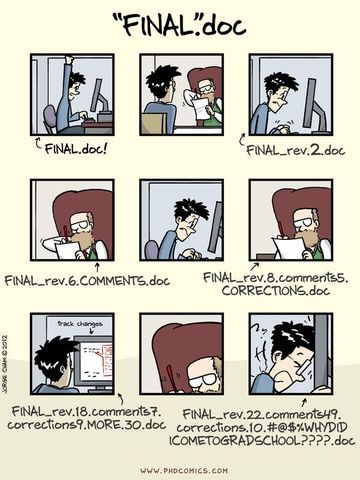Keeping track of changes to your files with version control
Session details
- Date of session: 30 Nov, 2018
- Instructor: Luke Johnston
- Session level: Beginner
- Part of the “Analysis Workflow Series”
Objectives
- To become aware of what “formal” version control is and looks like.
- To learn about the tools integrated into RStudio to make use of Git.
- To know the basic, and most commonly used, tools for Git.
- To know … Git and version control is not, not, easy. It is hard. But it gets easier and it is very worth it to learn.
But! No expectation to actually start using it… :) It took me months after I learned it before I started actually using it.
At the end of this session you will be able:
- Generally, just knowing how to navigate the Git interface in RStudio.
- Since you now know Git and version control exists, you can start talking about it… and find others who are more experienced so you can start working with them and learning too!
Resources for learning and help
For Git within RStudio:
For Git in general:
Lesson content
What is version control?1

Common “version control”
Version control is a system that manages changes to a file or files. These changes are kept as logs in a history, with detailed information on what file(s) was changed, what was changed within the file, who changed it, and a message on why the change was made. This is extremely useful, especially when working in teams or for yourself 6 months in the future (because you will forget things)!
To understand how incredibly powerful version control is, think about these questions (or refer to the comic above!): How many files of different versions of a manuscript or thesis do you have laying around after getting feedback from your supervisor or co-authors? Have you ever wanted to experiment with your code or your manuscript and need to make a new file so that the original is not touched? Have you ever deleted something and wish you hadn’t? Have you ever forgotten what you were doing on a project? All these problems are fixed by using version control (git)!
We are going to go over a typical workflow. This could be either a solo workflow or a collaborative workflow. All of this will be done through RStudio.

From xkcd
Why should you learn and use it? Why use Git?
- Big reasons for the sciences
- Claim to first discovery
- Defend against fraud
- Evidence of contributions and work
- Day-to-day reasons
- Easily keep track of changes to files
- Easy collaboration
- Organized files
- Less time findings things
Setting up your Git configuration
Four (five) concepts in Git (and ~7 commands)
- Start repository:
git init,git clone(GitHub) - Check activity:
git status,git log,git diff - Save to history:
git add,git commit - Move through the history:
git checkout,git branch(may be covered) - (Note discussed) Using with GitHub:
git push,git pull
Can also all be done through the RStudio Git interface!
All the commands and exercises will be done during the code-along.
Graphic: Git stages overview
Graphic: Git “remotes” (GitHub) overview
This work is licensed under a Creative Commons Attribution 4.0 International License. See the licensing page for more details about copyright information.